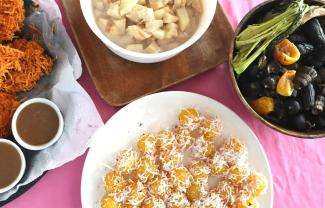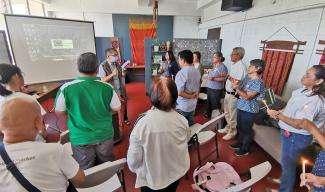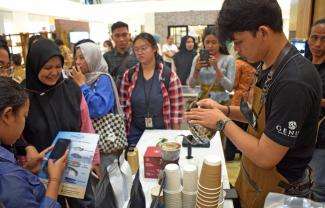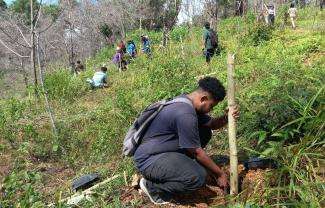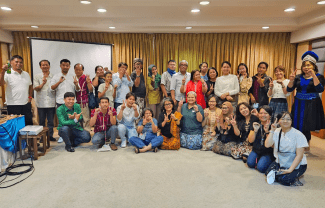It may well be said that for the Higaonon in Dulangan Ancestral Domain in Misamis Oriental and the Calamian Tagbanwa in Coron town in Palawan, culture embraces the way they provide food for themselves. All they needed to do was grow their own crops or pick edible plants that grow freely in their surroundings, hunt in the forests and fish in the sea and rivers.
That was many years ago, before they became reliant on buying food from the market. But, as the two communities realized during activities under Agrobiocultural Diversity of Indigenous Food Systems (ABCD in Food), a project facilitated by the Samdhana Institute, the eventual reliance on the market didn’t come as a choice; as the community members themselves put it, it was forced by factors like land use conversion, deforestation, development aggression, soil degradation, climate change, and displacement.
Calamian Tagbanwa participants from other communities shared that in their ancestral domain, some areas are occupied by migrants and fenced off as part of the tourism resorts. They were cut off from lands and coastal areas that they had traditionally foraged and farmed. The government allowed these projects to operate without respect for the indigenous peoples’ ancestral domain.
Tradition as key to food security
The project, which was implemented in coordination with the indigenous political structure of the communities, consisted of documentation activities and learning exchange between the Higaonon and Tagbanwa. It aimed to revive the way the two communities value their traditional food systems and the food sources and practices within their ancestral domains, and to help indigenous peoples develop resilience. It built on efforts starting in 2018 and became timely during the COVID-19 pandemic when many communities, especially those in the urban areas experienced food insecurity.
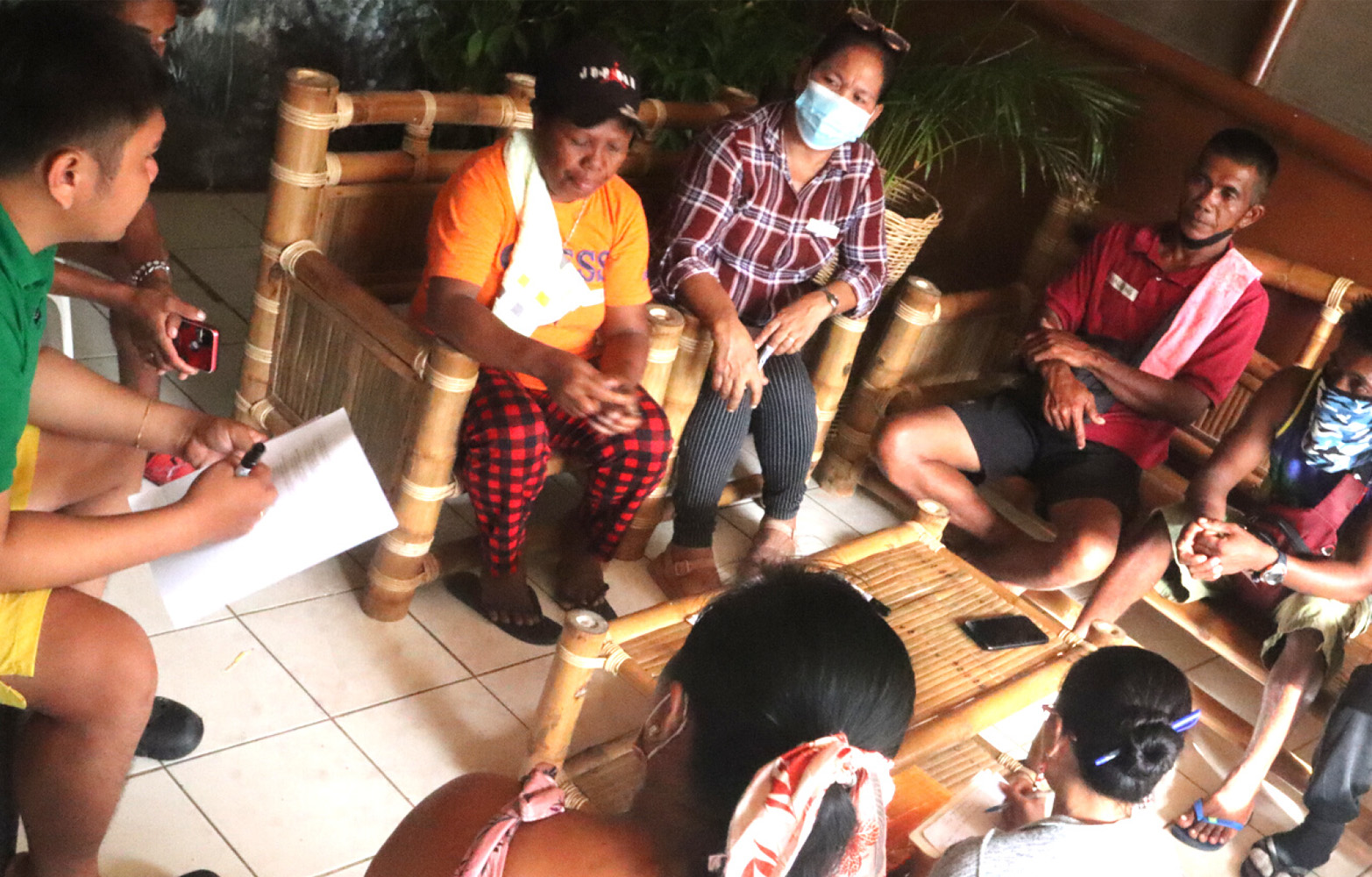
Riza Apdian, one of the Higaonon women participants, said the food documentation helped her go back to her roots as an indigenous person.
“In the past, my ancestors had an abundance of different food sources that are nutritious, unlike today. After attending the food documentation activities, I rely on these food sources from the environment...it will prepare us to be more resilient,” she said.
“We can bring these different food sources to our table. I am more motivated to share these learnings, and especially now that we have our communal garden, I hope these learnings and initiatives will be replicated and sustained,” she added.
Lost territory, lost knowledge
The documentation activities required the participants and community members who were interviewed to recall the primary sources of foods of their elders or ancestors. These also made them realize that knowledge of food systems, including sources (forests, rivers, seas) and seasonality or the time of year that they are available, are rooted in their traditions as foundations of their culture and spiritual well- being.
In the past, these methods ensured food security for the indigenous communities. However, in Coron Island in particular, this body of knowledge is slowly disappearing because it has not been documented and transmission is mainly through oral means. The influence exerted by mainstream society is another reason; most IPs now prefer to buy food from the market rather than gather from their surroundings, which requires more labor and a longer period to harvest.
The participants cited the loss of control over their ancestral domains and access to resources as yet another factor for the gradual demise of these practices. As they would realize along the way, tenure security means food security.
This reality is more pronounced in the Calamianes Islands, where the local government does not recognize the indigenous peoples’ rights to their ancestral domain. Those living in far-flung areas are not even provided such basic services as potable water supply and electricity.
In contrast, local government officials are allowing private individuals and investors to own areas within the ancestral lands and waters of the Tagbanwa, in particular those with high potential to become prime tourist destinations. This, along with “development” projects that disregard their way of life and destroy the ecosystems, has deprived the Tagbanwa of access to their traditional sources of food.
‘Panlauy’ and other practices
As part of the documentation activities, the Higaonon conducted a “panlauy” or forest trek in Dulangan. Twenty-one men, women and youngsters did a transect walk through the forest within their ancestral domain to identify traditional food and other resources. Unfortunately, they had to cut it short due to the presence of rebels in the area.
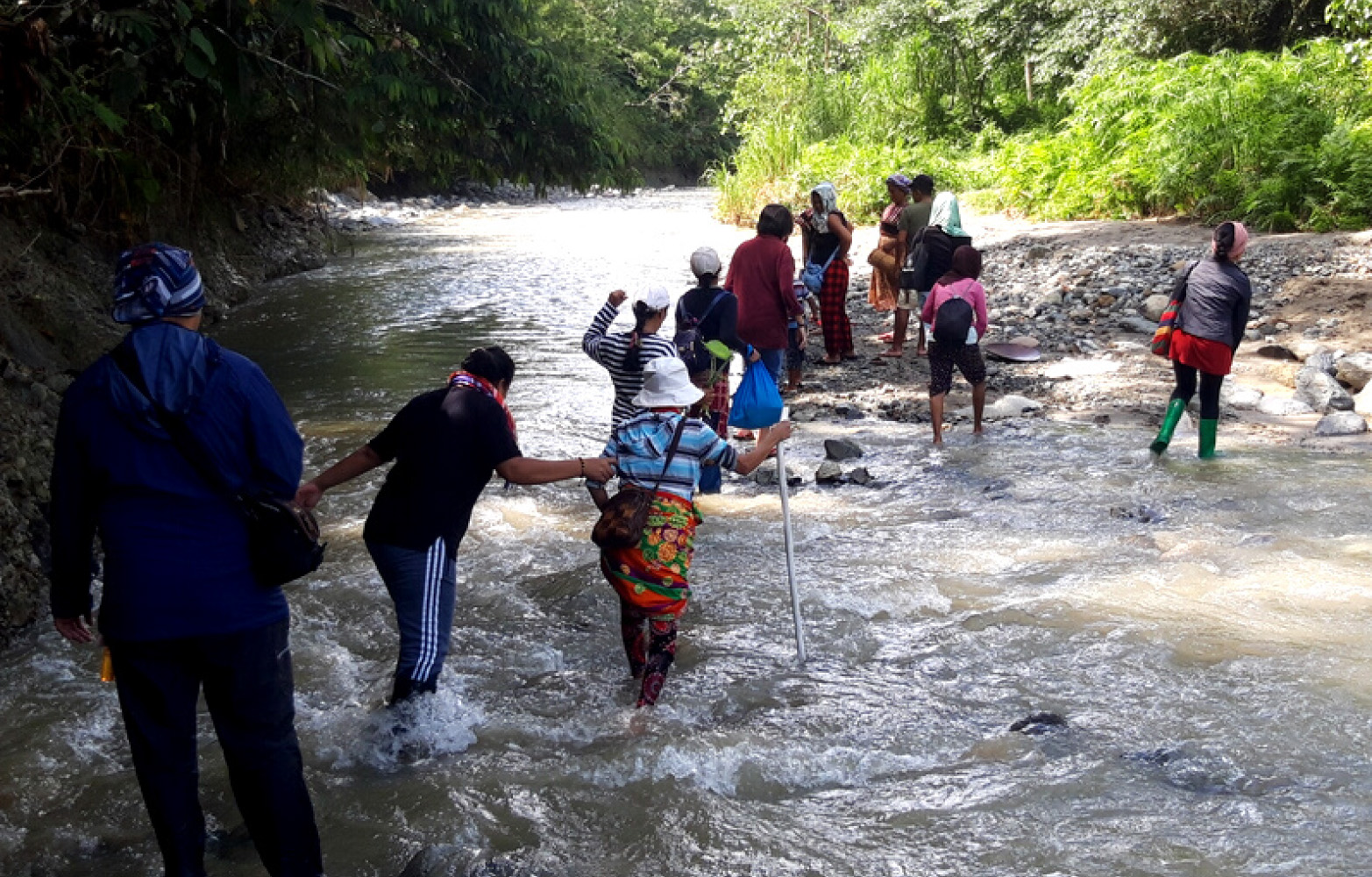
Rivers and creeks also serve as food sources for the Higaonon. There they would practice “pangiwag” to get fish and other edible creatures at night, as well as “panikop” by building makeshift dams when trying to catch fish using bamboo or rattan baskets or nets. But they have stopped practicing these methods, which they consider too tedious.
The documentation activities identified over 70 food sources ranging from the forest to the coast. Calamian Tagbanwa call their traditional food “silipeten” while the Higaonon call it “salag-on”. The results will be featured in a book that will mainly serve as an internal document for the community, and will be included in their Ancestral Domain Sustainable Development and Protection Plan.
To conserve the remaining salag-on in the community, the Higaonon partners will develop their “food forest”. They have already conducted two meetings for establishing a communal garden, and laying down initial plans for the “food forest,” which will have an area of roughly four hectares. They envision growing together the traditional root crops, fruit trees, traditional grains, and others that they had identified in the forests.
Higaonon partners are excited to replicate this initiative in the seven other gaup or communities in their unified ancestral domain. In Calamianes, there is a plan to replicate it in the Depelenged community to sustain the earlier documentation activities in the community’s mangrove areas. In this manner, the promotion and conservation of their traditional foods will be institutionalized.
Learning exchange
Aside from the documentation activities, the two partner communities engaged in a learning exchange. Since the ABCDinF project simply replicated the existing initiatives that were piloted by the Calamian Tagbanwa, eight men, women, and youth from the Higaonon community went to Palawan to learn from the experiences and lessons of their hosts.
Their conversation covered the present state of their food practices, food security initiatives, documentation outputs and community plans, and their ways of preserving traditional knowledge. The exchange led them to realize the link between food security, natural resources, and asserting their rights to their ancestral domains. Tagbanwa women cited as example the need to protect the mangrove forests in their territory because it’s where they get medicines that they use after giving birth.
Moreover, they shared insights on why their traditional practices and indigenous knowledge have disappeared over time. They cited factors like land use conversion, deforestation, and climate change. On top of these is the encroachment of migrants into their ancestral domains. The Tagbanwa said migrants have fenced off their (Tagbanwa) lands for tourism purposes, preventing them from entering the lands and coastal areas that served as their traditional sources of food. They said the government allowed these projects to operate without respect for the indigenous peoples’ rights to their ancestral domain.
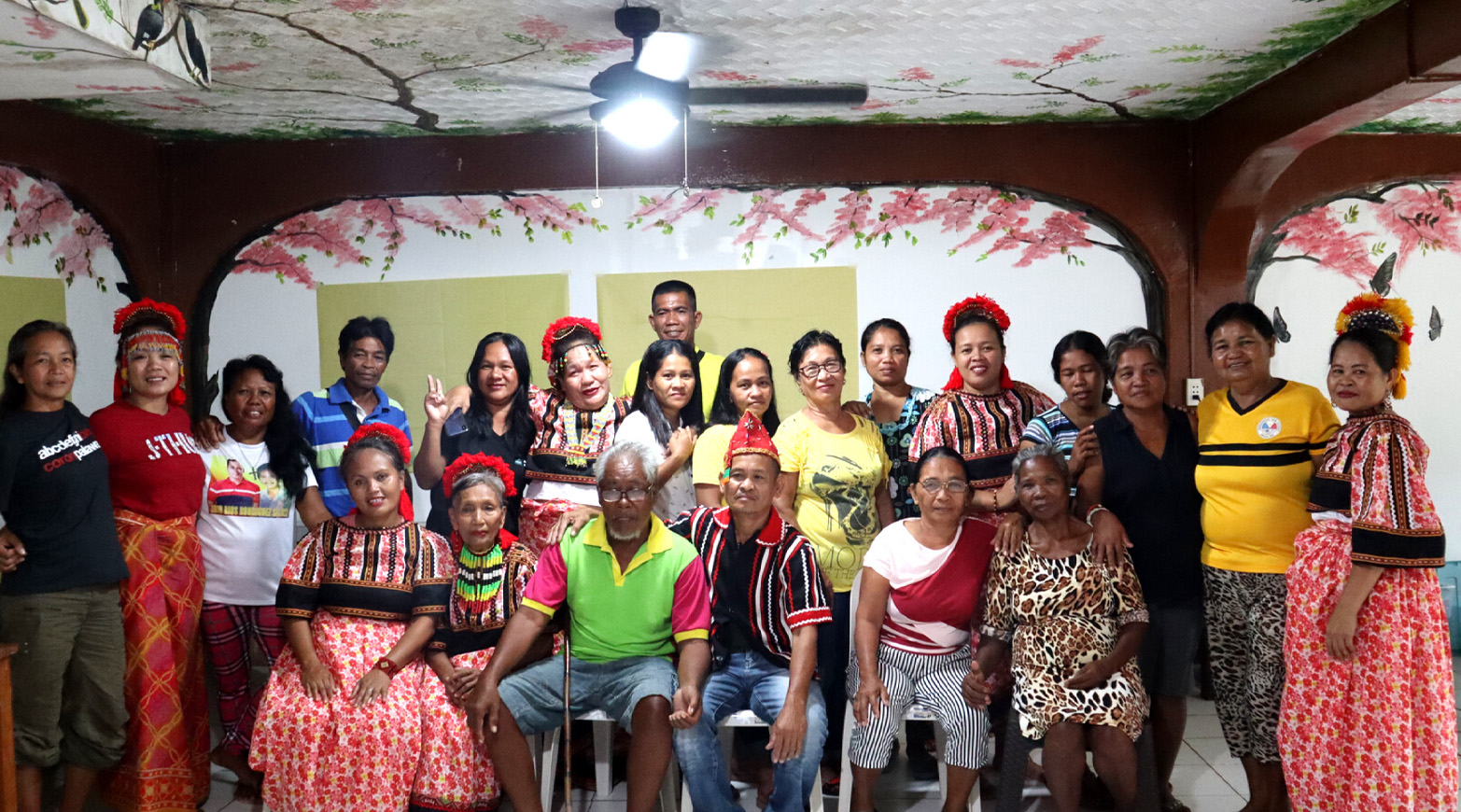
Women and youth participation
Women and youth were empowered by the project, as it highlighted their significant role in strengthening their food system as an element of their culture. It has boosted their self-confidence, provided knowledge, deepened their appreciation of the need to embrace their culture and assert their rights to their ancestral domain. The elderly women who participated in the interviews felt the importance of their role as culture bearers and in transmitting indigenous knowledge systems and practices to the next generation.
On the other hand, the men realized that women are capable not only of doing household chores but also as repositories of knowledge about food, medicine, and natural resources. In Dulangan, they see the value of women and men working together in natural resource management with their respective roles.
At the start of the project though some male tribal leaders questioned why it’s the women who led the project, giving the impression that they still clung to the view that women should remain inside their homes. This entailed several presentations and discussions with the community partners to reach a common understanding with them and gain their acceptance. Besides, there was the challenge of how to catch the interest of the youth to involve in the documentation activities.
Future plans
For Samdhana, the experiences from the project provided lessons that should be communicated to other indigenous communities to make them aware about various ways to assert their rights. And, since food security and food sovereignty remains a primary goal of the Institute as part of building resilience, the project should be replicated in other indigenous communities.
In line with its promotion of an agro-ecology framework that is closely woven into indigenous knowledge and worldview, Samdhana envisions linking the project partners to other organizations in their initiatives to set up a “food forest”.
Moreover, indigenous peoples need to speak out more about their rights and about their ancestral domains. Hence, Samdhana is planning to develop (through learning by doing with community partners) programs and learning activities that will increase their capacity, especially that of the youth, in communicating more effectively about their rights, identity and culture.
